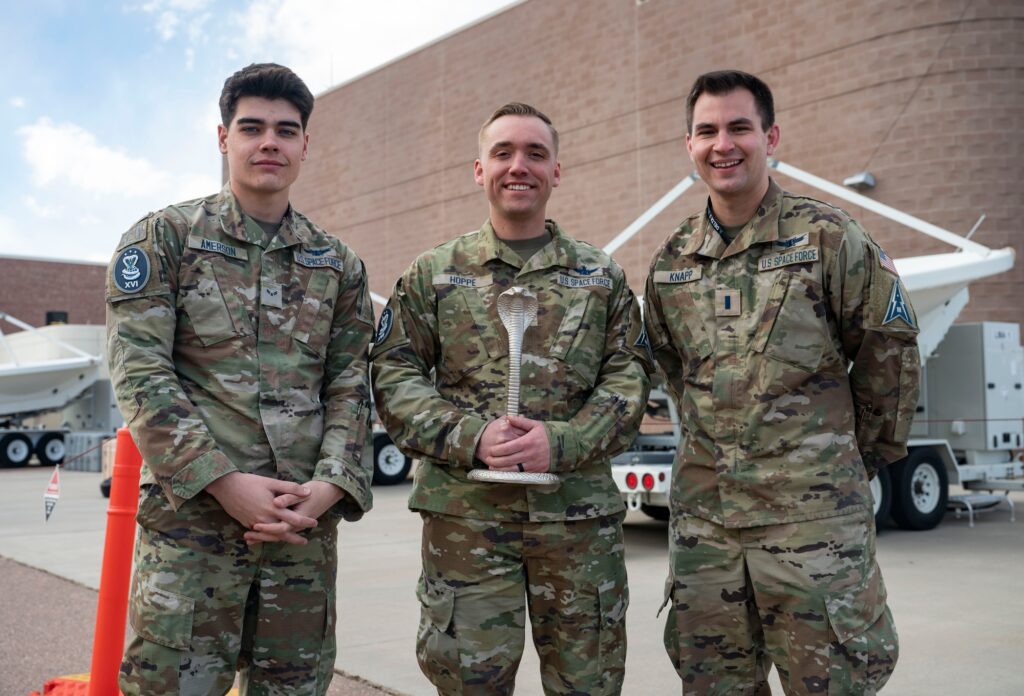The United States Space Force (USSF) is the newest branch of the United States Armed Forces, established in December 2019 as part of the National Defense Authorization Act for Fiscal Year 2020. Its mission includes protecting U.S. interests in space, defending against space-based threats, ensuring freedom of navigation and use of space, supporting joint military operations, and enhancing the resilience of space systems. The USSF is organized into three major components: Space Operations Command (SpOC), Space Systems Command (SSC), and Space Training and Readiness Command (STARCOM). It collaborates with other branches of the U.S. Armed Forces, international allies, and organizations like NASA to advance space exploration and security.
Guardians of the Skies: The United States Space Force
Introduction
The United States Space Force (USSF) is a military service branch responsible for conducting space operations and defending U.S. interests in space. Established on December 20, 2019, as part of the National Defense Authorization Act for Fiscal Year 2020, it is the sixth and newest branch of the United States Armed Forces. The creation of the Space Force marked a significant milestone in the country’s commitment to space exploration and security.
Mission and Objectives
The USSF has a multi-faceted mission that encompasses a range of activities related to space. Its primary objectives include:
- Protecting U.S. interests in space
- Deterrence and defense against space-based threats
- Ensuring the freedom of navigation and use of space
- Supporting joint military operations through space capabilities
- Enhancing the resilience and sustainability of space systems
These objectives reflect the growing importance of space in national security matters, as well as the need to maintain a competitive edge in an increasingly contested domain.
Structure and Organization
The USSF is organized into three major components: Space Operations Command (SpOC), Space Systems Command (SSC), and Space Training and Readiness Command (STARCOM). Each component plays a crucial role in fulfilling the Space Force’s mission.
The SpOC is responsible for conducting space operations, which involve the planning, coordination, and execution of space missions. This component focuses on activities such as satellite launches, space surveillance, and supporting military operations with space-based assets.
The SSC oversees the development, acquisition, and maintenance of space systems. This includes satellite design, ground control networks, and other critical infrastructure required for space operations. The SSC works closely with industry partners and other government agencies to ensure the United States maintains a technological advantage in space.
STARCOM is responsible for training and educating space professionals, including new recruits, officers, and enlisted personnel. This component ensures that the Space Force has a highly skilled and capable workforce ready to address the complex challenges of space operations. STARCOM also conducts research and development initiatives to advance space education and training methodologies.
Collaboration and Partnerships
While the USSF is an independent military service branch, it maintains strong collaborations and partnerships with other branches of the U.S. Armed Forces, as well as international allies. Space operations require a high degree of coordination and cooperation, as multiple countries have a vested interest in ensuring the peaceful and secure use of space.
The USSF also works closely with organizations like NASA, the National Reconnaissance Office (NRO), and other government agencies involved in space-related activities. These partnerships facilitate information sharing, technology transfer, and joint research efforts to advance space exploration and security.
Conclusion
The United States Space Force is at the forefront of protecting national security interests in the space domain. With its dedicated mission, structure, and partnerships, the Space Force enables the United States to maintain its leadership position in space operations and exploration. As the importance of space continues to grow, the Guardians of the Skies are committed to ensuring a safe, secure, and prosperous future in space.
